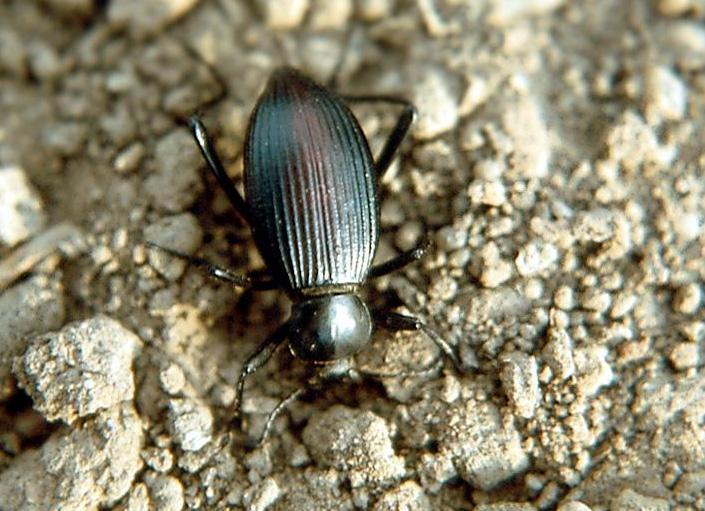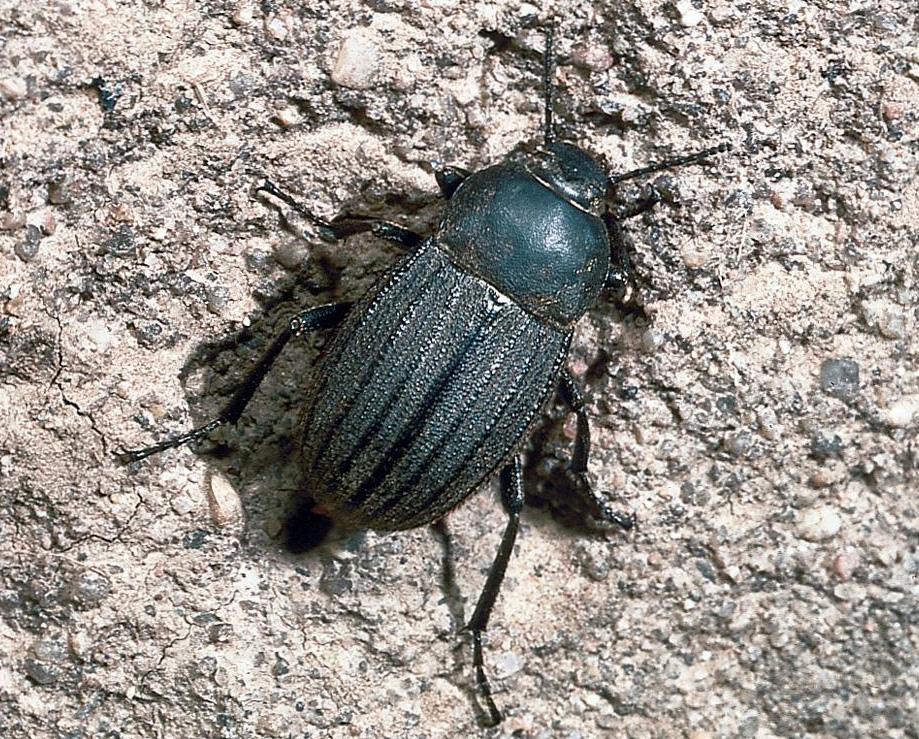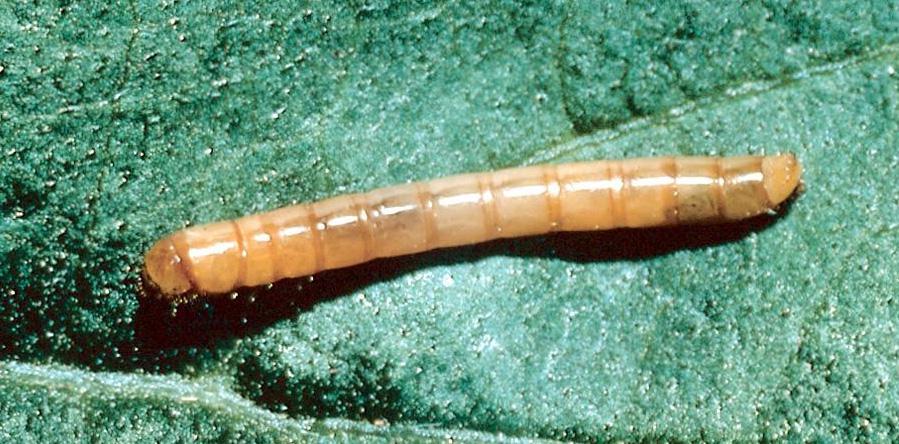False Wireworms
Tenebrionidae
|
Eleodes suturalis. |
Eleodes hispilabris. |
|
Embaphion muricata. |
Eulodes tricostata |
False wireworms are the larvae of darkling beetles (family Tenebrionidae). A number species occur in Kansas, primarily in the western two-thirds of the state, including several species in the genus Eleodes. Adults are large (up to an inch or more in length), dark-colored, long-legged beetles that often can be seen running over the ground and hiding under litter. Adults vary in appearance and size, but most species have antennae with eleven segments, 5 tarsal segments on the first 2 pairs of legs, and only 4 tarsal segments on the third pair. The wing covers may be ridged, smooth or have a granular appearance, and are fused together so the adults can't fly. When disturbed, adults of Eleodes spp. have a peculiar habit of lowering their head and elevating their abdomen in the air as if they were trying to stand on their head.
|
False wireworm larva |
The larvae closely resemble true wireworms (Elateridae) in appearance, slender and hard-shelled, with noticeable segments, but they have longer legs and antennae. The larvae range from yellowish-brown to nearly black, depending on the species.
Page last updated 06/06/2024 by J.P. Michaud.




